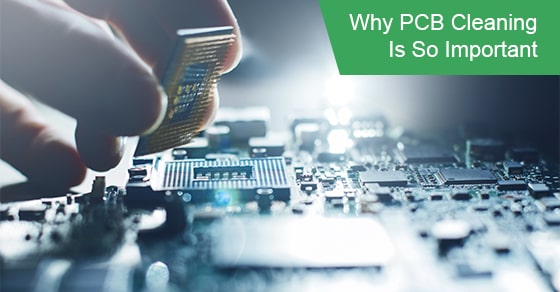Why PCB Cleaning Is So Important
Printed circuit boards (PCBs) serve as the brain and heart of many of the electronic devices that consumers use every day. Cars, electronics, and medical devices are just some examples of devices that need PCBs in order to operate as intended.
However, in order for printed circuit boards to work as designed their multiple connections will need to be clean. PCBs consist of several different components, with each component serving a specific purpose. If the connection between them has been tampered with in some way, then the devices that use PCBs would malfunction.
From lifesaving pacemakers to making a simple phone call on your phone, PCBs need to be in optimal condition, which is why PCB cleaning is so important. Here, we will discuss circuit manufacturing in Toronto and why PCB cleaning is essential.
Why it Matters
After a printed circuit board has been soldered and manufactured, it will need to be cleaned thoroughly. Cleaning PCBs is considered a vital component of the electronic device assembly process.
Failure to properly clean a PCB may lead to harmful effects to the durability, effectiveness, and reliability of the device in question. The overall lifespan or longevity of the device will also be negatively affected.
How do PCBs become tainted?
During the manufacturing and soldering stage, a printed circuit board may become tainted with solder, dirt, or flux. The PCB may become soiled from dirt that was produced during the handling process, or from the environment.
Fingerprints, resin, residue, oxides, moisture, colophony, and dust are just some of the things to look out for while manufacturing and soldering a PCB. Even worse, some of these contaminants also possess erosive properties. The connections and circuits may become affected over time, which may lead to failures and short circuits.
Given how important the lifespan of a device is for many consumers, PCBs will need to be in optimal condition in order to expand the longevity of the device.
The Primary Goal of PCB Cleaning
The main goal of cleaning is to remove flux and resin residue from PCBs that are populated. The vast majority of PCB assemblies in the aerospace, automotive, military, and telecommunications industries will require assemblies that are devoid of harmful contaminants.
In fact, PCBs that are contaminate-free are considered mandatory for the next manufacturing stage, which may consist of conformal coating, epoxy shaking, or underfill. Flux residue that is left to sit on the assembly will cause delamination and/or poor wetting. As an added benefit, the PCBs will also appear more aesthetically pleasing after they have been cleaned.
The Inspection Process
There are also many other benefits to having a clean and clear printed circuit board. For instance, a clean and clear PCB will accelerate the inspection process, and will also help when troubleshooting issues arise in the future. It is far easier to detect potential issues or defects when the PCB and its components are cleaned of any residual solder and contaminantes.
“No Clean” Flux
There are certain types of flux in the industry that are advertised as “no clean”. Some people may, therefore, assume that PCB cleaning is not a requirement after the flux has been applied.
However, in reality, “no clean” flux should still be cleaned. After the board has been soldered, it should be cleaned meticulously in order to enhance the appearance of the unit, as well as to avoid the risk of electrical leakage. While “no clean” flux is designed to generate the least amount of residue, it is not immaculate by any means.
What cleaning method should I use?
There are several different cleaning methods to choose from, with each boasting different benefits. Each method also has certain drawbacks, and the one you select should depend on time, environmental factors, budget, and the density and complexity of the components involved.
Manual Cleaning
This involves removing leftover solder and other contaminants via physical extraction. Usually, a small brush and some alcohol solution is used to manually remove the contaminants.
To begin, you will need to soak the printed circuit board in some acetone for approximately 10 minutes. By doing so, the dirt and/or contaminants on the board will loosen, which will make removal far easier.
Once the board has been sufficiently soaked, use your small brush to carefully remove undesirable particles. In most cases, you should remove the contaminants while the board is doused with some ethyl alcohol.
After it has been brushed, proceed to rinse the board with some demineralised water. After you have rinsed the board for 3 to 4 minutes, you will need to dry it completely using a top-of-the-line nitrogen gas gun.
Ultrasonic Cleaning
In order to employ the ultrasonic cleaning method, you will need to use a machine that was designed specifically for cleaning printed circuit boards. Begin by soaking the board in ethyl alcohol to loosen the excess solder, dirt, and contaminates.
Next, place the board into the bath of cleaning solution that is found inside the ultrasonic apparatus. The machine uses high-frequency sound waves that are emitted into the cleaning solution bath. Billions of bubbles are generated and, upon popping, the bubbles will physically remove any undesirable additives and residue via a process known as “cavitation”.
We would recommend the ultrasonic cleaning method if your boards are highly complex and very dense with multiple components. This is because the billions of tiny bubbles will be able to reach every bit of the surface that has been exposed.
However, the possible drawback is that the high-frequency sound waves may end up damaging some of the connections or components. Still, we would recommend the ultrasonic cleaning method if you are dealing with highly dense boards that cannot be properly cleaned with a manual brush.
Circuits Central
Circuits Central specializes in circuit manufacturing in Toronto. We can be reached via our website or by calling us at 1-888-821-7746.

